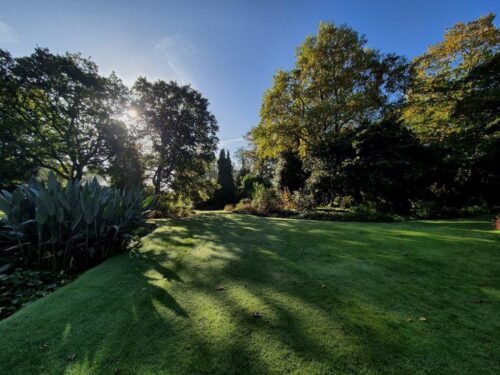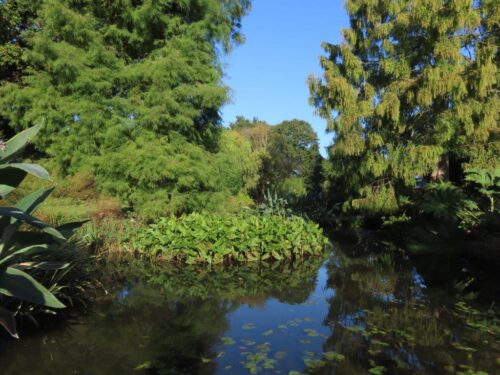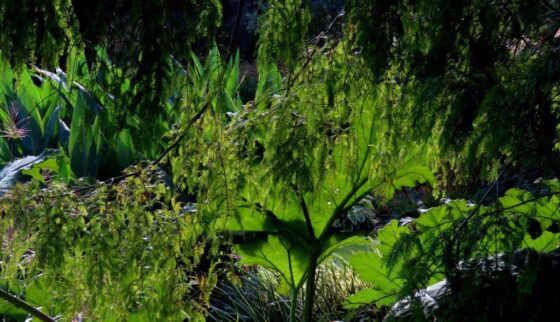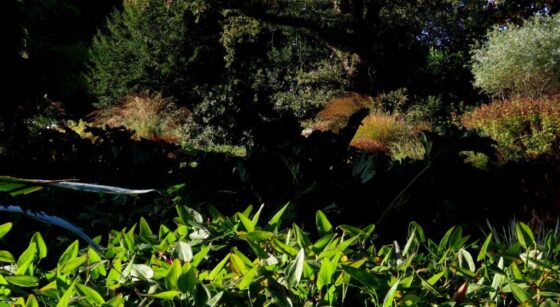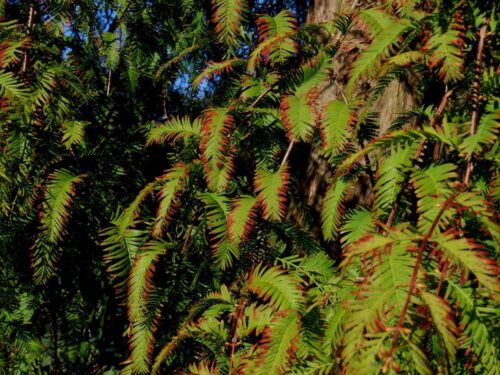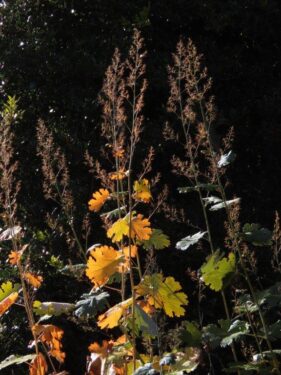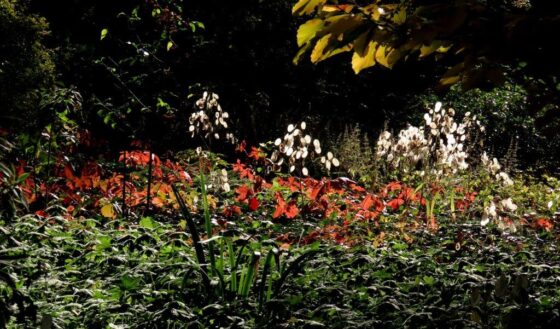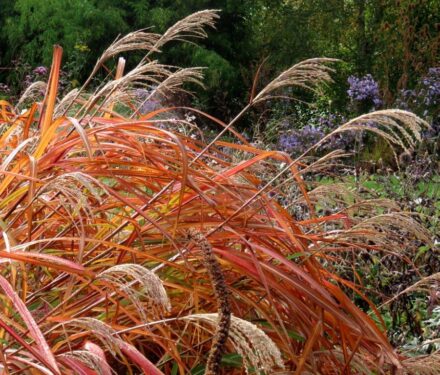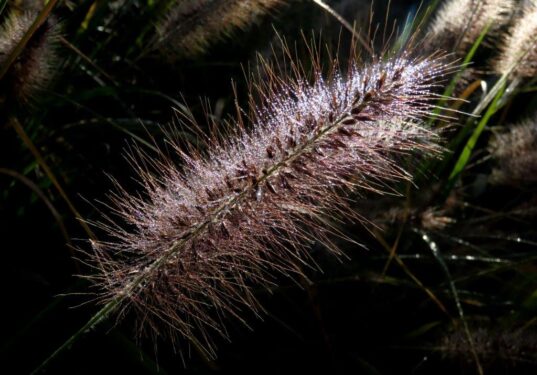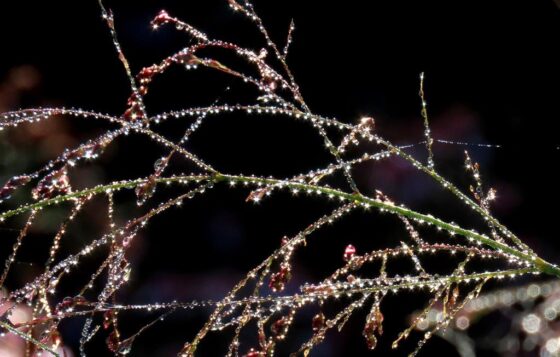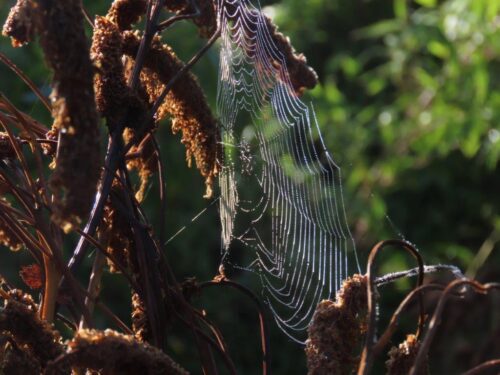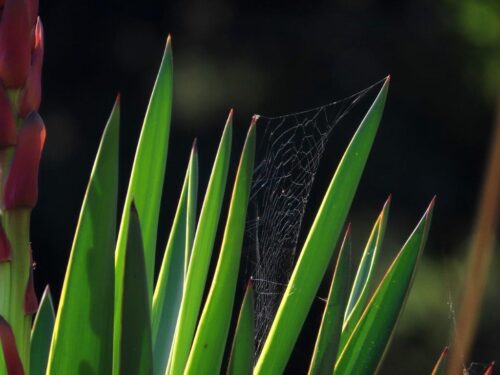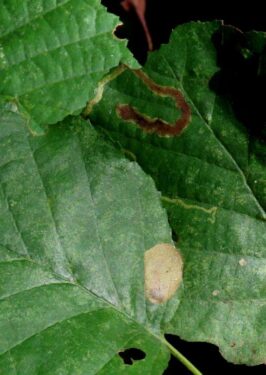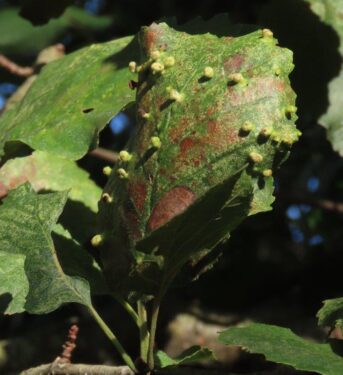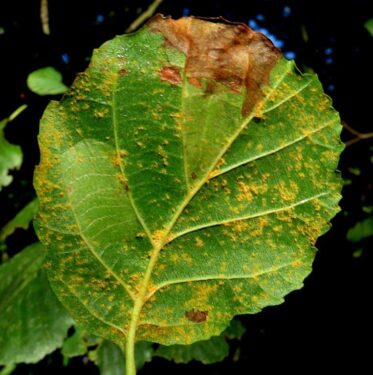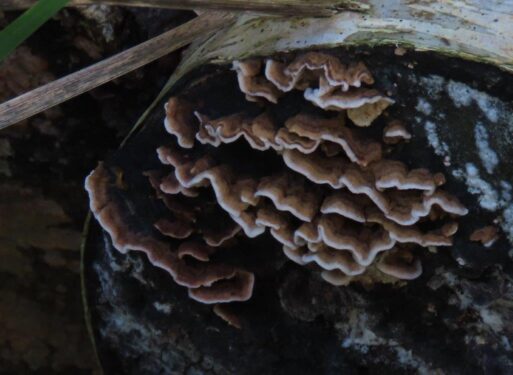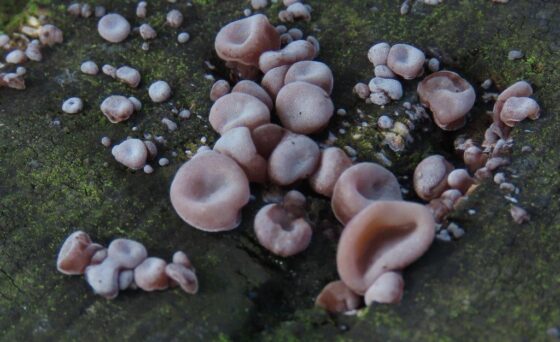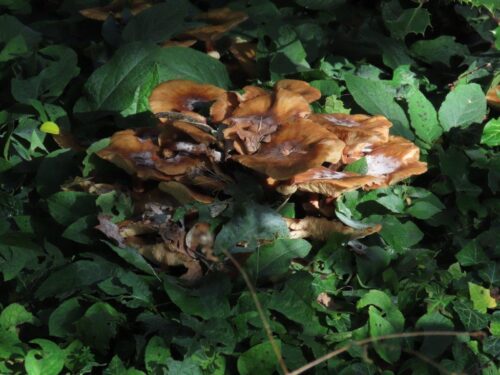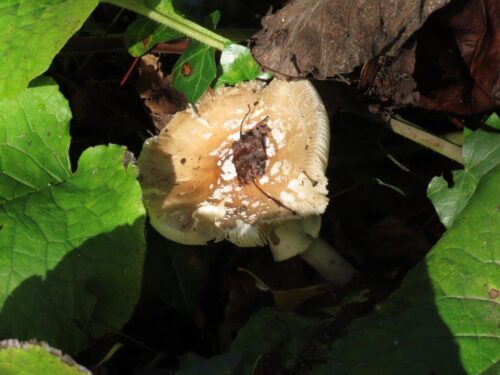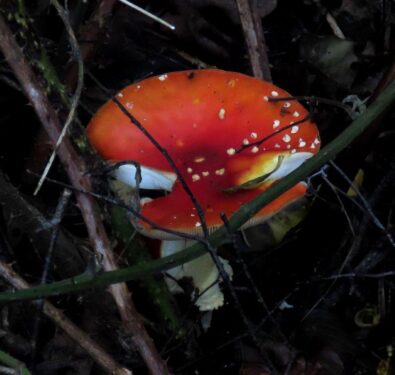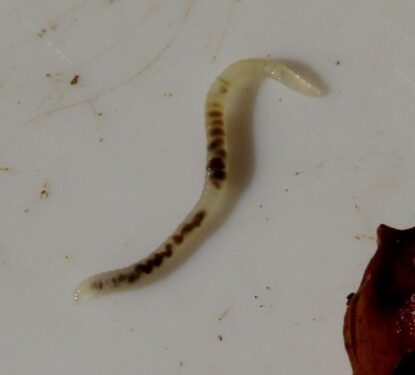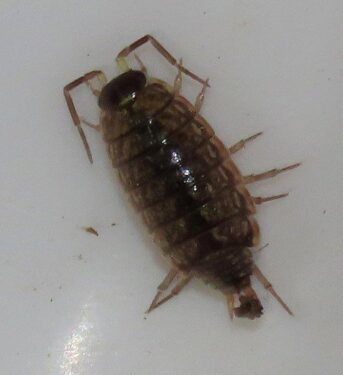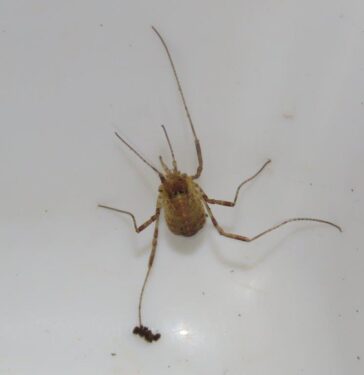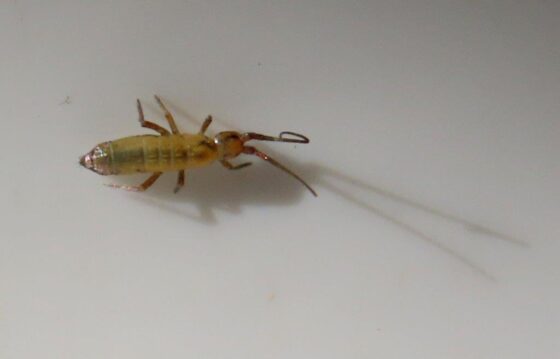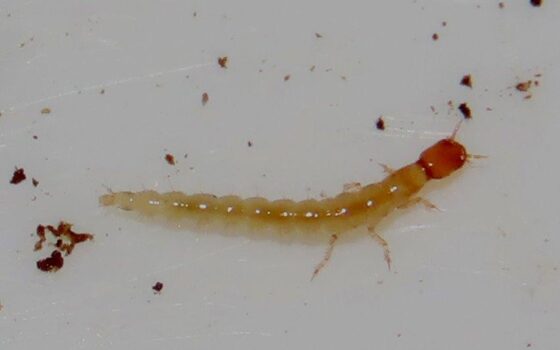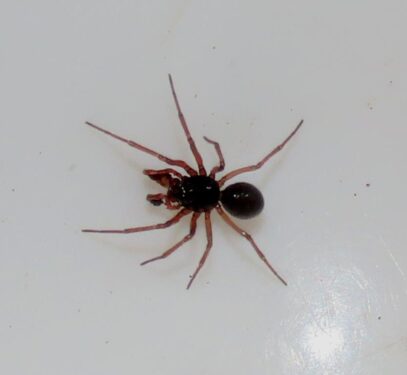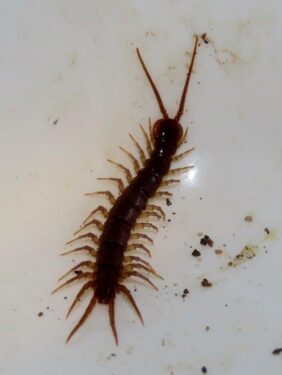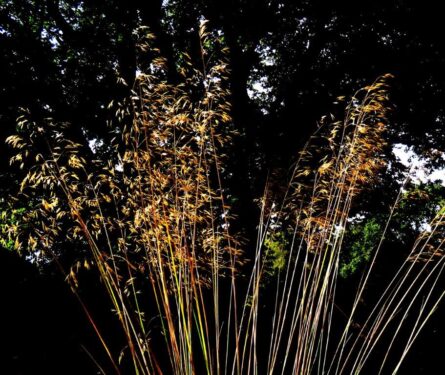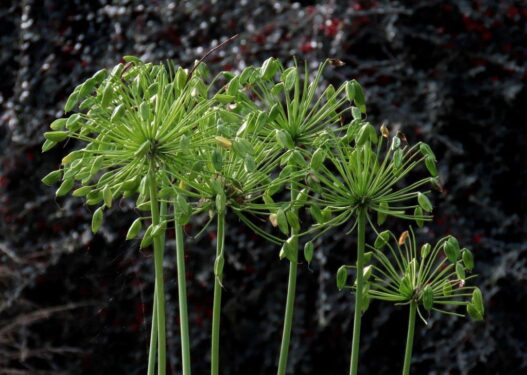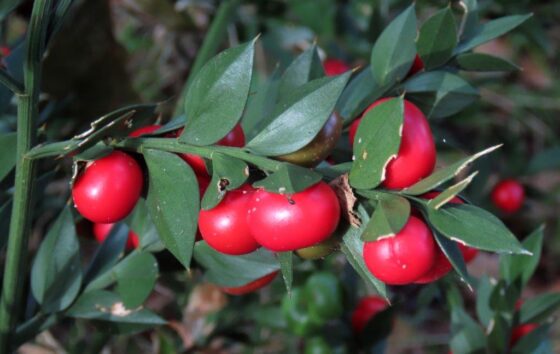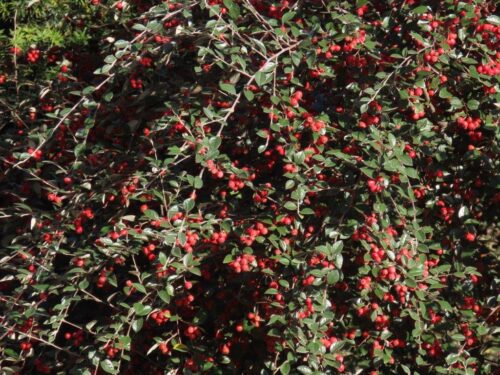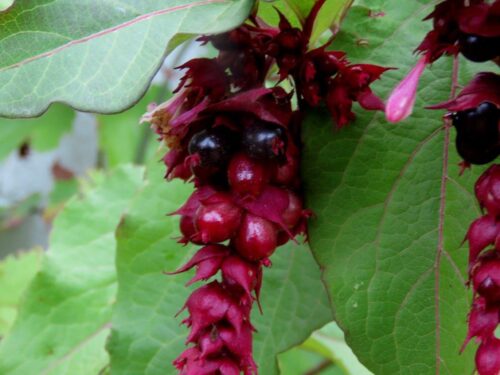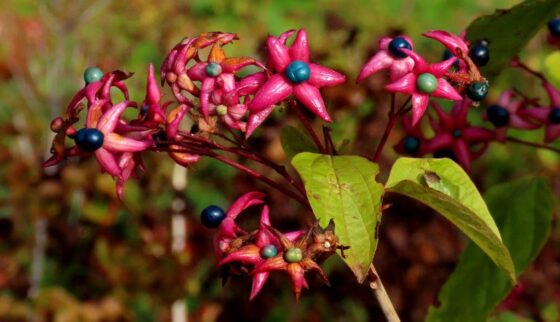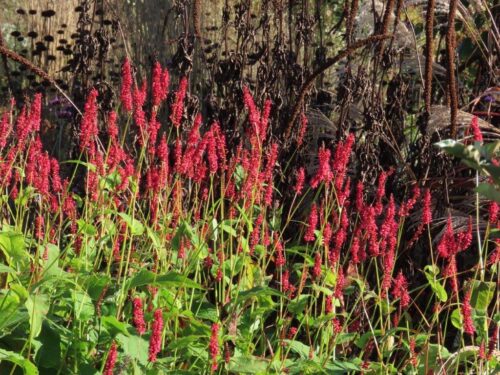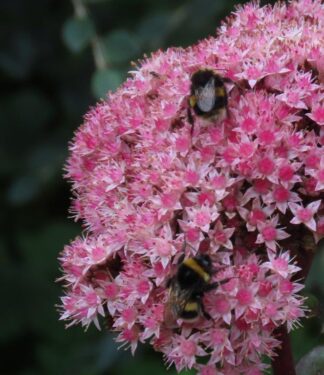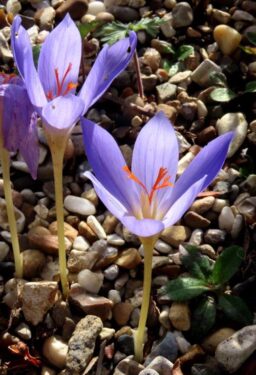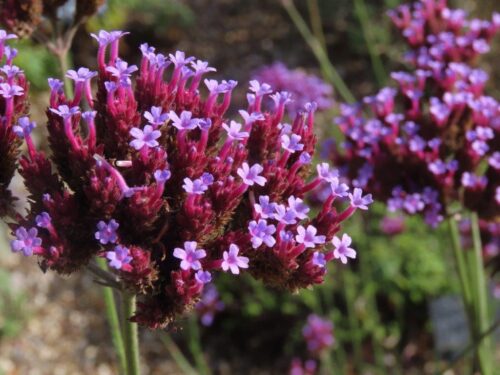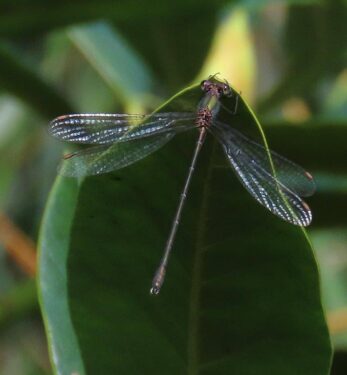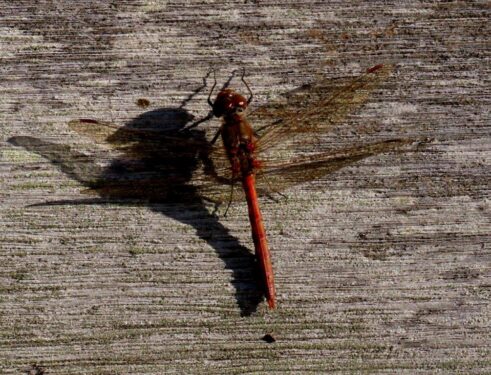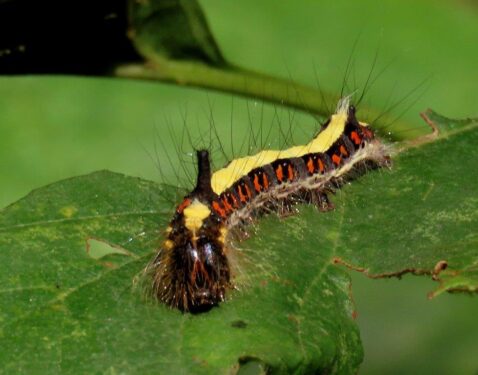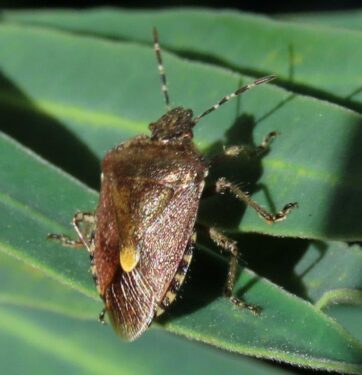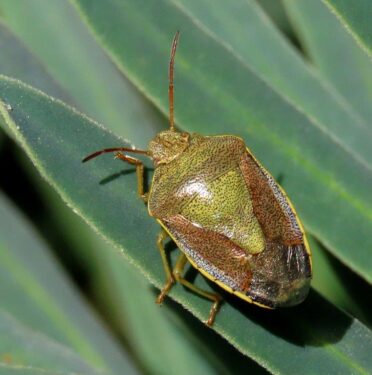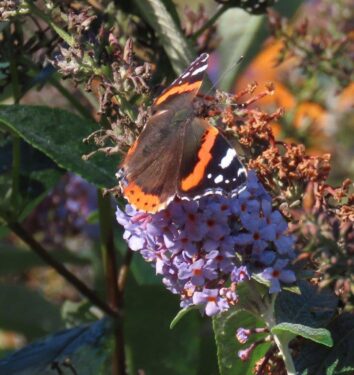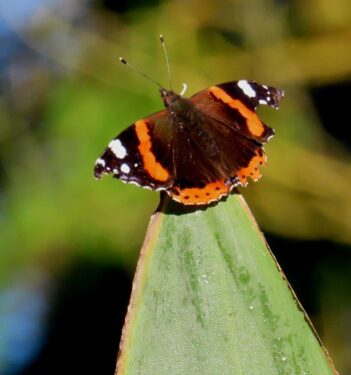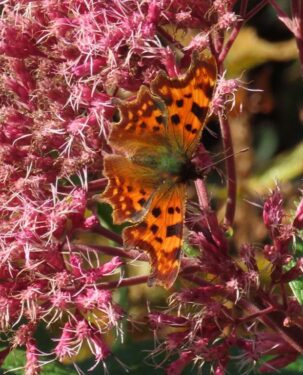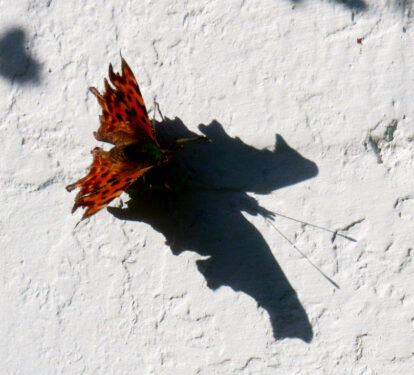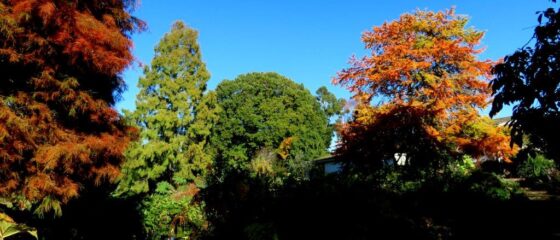October, the month when the low-angled sun sends shafts of dappled light through the garden, illuminating a scene of nature starting to bed in for the winter. This month I am fortunate to have had excuses to go there on four or five occasions, almost all of them under blue skies and in sometimes unseasonable, unreasonable warmth…
It was the month that started green …
… developed russet and orange tints …
… until now when whole swathes are alight with the glow of autumn flames.
Misty mornings add their own veil of mystery, leaving evidence of their passing in the form of dewdrop diamonds adorning flowers, foliage and silken webs alike.
The process of autumnal change is both intrinsic and extrinsic, senescence with an added splash of leaf-miners, sprouting galls and sporing microfungi …
And then there are the macrofungi, this autumn being one of the best I have seen for them in the garden, including my first record of Fly Agarics fruiting under the Silver Birches:
Fungi are one of the main groups of decay organisms, adding to that overlooked but vital virtuous circle of ‘life → death → decay → renewed life’, hopefully cycling ad infinitum. But the initial part of decay is down as much to the chompers as the rotters, and for the first time we had a look for some of those by scrabbling around in leaf-litter and under logs. Here are just a few representatives of that rich ecosystem of detritivores (and their predators!), from worms, woodlice, harvestmen and springtails to beetle larvae, spiders and centipedes.
Autumn is also a time of bounty, with plants in fruit all around the garden. From grassheads glinting gold in the sidelight to swelling capsules of Agapanthus…
… and of course the burgeoning berries in a kaleidoscope of colours, each food for someone, reassurance that if we ever get a hard winter again, Nature will provide.
While floral displays are fading, they are still there and providing, especially Hylotelephium and Crocus for bumblebees, Bistorta and Verbena for Honeybees, social wasps and pretty much everything.
Dragonflies and damselflies, the true spirits of High Summer, have still been flying throughout the month, mostly Willow Emeralds (more than I have ever seen before) and Common Darters, with a few Migrant Hawkers to mid-month. Assuming we don’t get early frosts, we can look forward to the first two species well into November, maybe beyond.
A selection of the leaf-feeders during the month includes a Grey Dagger moth caterpillar, a Hairy Shield-bug and most surprisingly a Gorse Shield-bug, the first time I have ever found it in our garden. We don’t have much Gorse, and this species has a very close relationship with that food-plant – although remarkably that particular specimen was actually on Euphorbia!
And yes there have still been butterflies around, reflecting the fact that the previous month saw the greatest number of butterflies for the whole of this poor summer. I saw a total of six species during the month: most numerous were Red Admirals, looking increasingly battered and presumably individuals that had ‘opted’ not to join the record-breaking southward migration in September.
Commas too were numerous, including the one casting a very appropriate shadow for Halloween on the wall of Beth’s House!
Birds don’t often feature highly in my walks around the garden given the number of human visitors, but at migration times they can be numerous flying over, this month Swallows and Skylarks in particular. And it has been a long time since I recorded three new species for me in the gardens in one month. Two were perhaps not unexpected, a pair of Red-legged Partridges wandering in from surrounding fields, and a Grey Wagtail that dropped in on migration. But the third was a real delight, a Nuthatch calling loudly from either side of the Reservoir Garden on one visit; although not uncommon across much of the country, it is very scarce, indeed largely absent, on the Tendring Peninsula, east of Colchester. So a month of colour, a month of delights, and a month of new things for the Beth Chatto Gardens, our incidental nature reserve!
